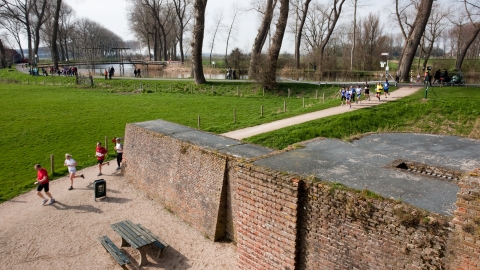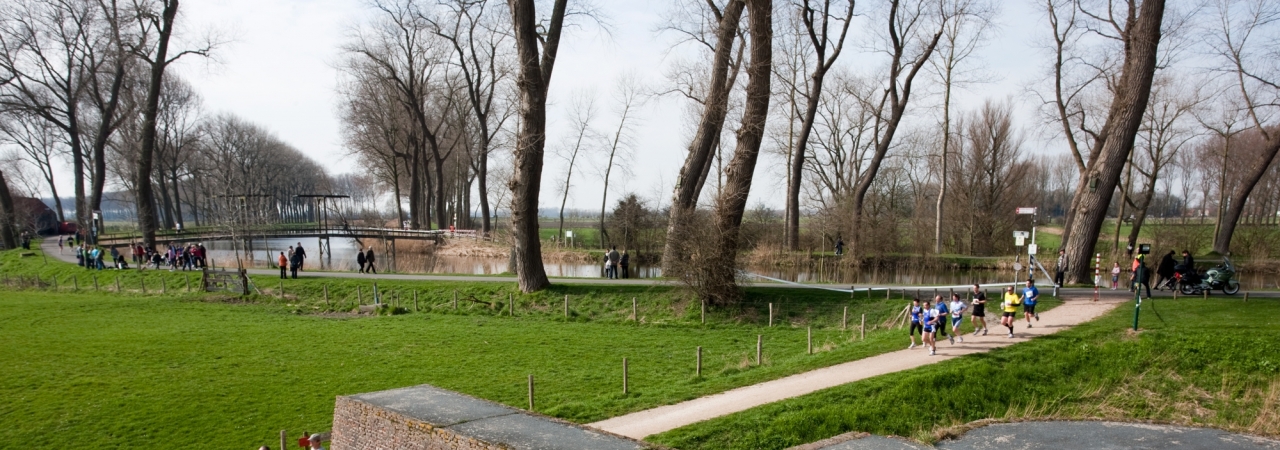The States-Spanish Lines are the remains of sixteenth and seventeenth century fortifications constructed in the period of the Eighty Years’ War (1568-1648) up until the French Period (1794). The system of defence works extended on both sides of the national border from Knokke-Heist in the west up to and including Antwerp in the east. The Lines not only played an important role in determining the national borders between the Netherlands and Belgium, but also in the further history of the two countries. Many of these lines and defences can be seen reflected in the landscape.
Unique element
Throughout the region, around sixty elements are still very to reasonably visible in the landscape, varying from small fortified towns to forts, big and small, and dykes. Traces of hundreds of forts are now only found in the ground. The presence of so many defence works from one particular period in such a relatively small area (40 by 80 km) is unique. They help determine the identity of the region and explain the position of the boundary between the Netherlands and Belgium. For a total overview, you can consult the map on this website.
Earthworks
In contrast to medieval castles, which were usually made of natural stone, and more recent forts, where lots of bricks and mortar were used to build large buildings and walls, the States-Spanish Lines are characterised by earthworks. This material was in plentiful supply in the region, so that the fortifications could be constructed fast and cheaply. Most of these forts had structures on them, often a wooden watchtower and sometimes also accommodation for soldiers and powder magazines. Today, no buildings survive from that period.
Flooding
The forts were built in strategic places on the mouth of channels or elevated roads and dykes. This enabled them to monitor the surroundings. When the enemy approached, the dykes were opened, thus flooding whole areas. Later, this operation was performed in a more organised fashion. In more peaceful times, the flooded areas were reclaimed. With a bit of imagination, you can still see this sequence of human interventions all over the landscape.
Numerous forts are now landscape treasures and have become important conservation areas. The eroded embankments and canals form an ideal habitat for many plants and animals.
Eye-catchers
A visit to the remains of the States-Spanish Lines is a real experience. On this website, you will find a number of prominent locations. You can find them between the dykes, canals, streams, residential areas and countryside that feature in our cross-border ‘krekengebied’. And please feel free to visit the other forts and lines, because there are more locations which have not been included. For a total overview, consult the map on this website.

